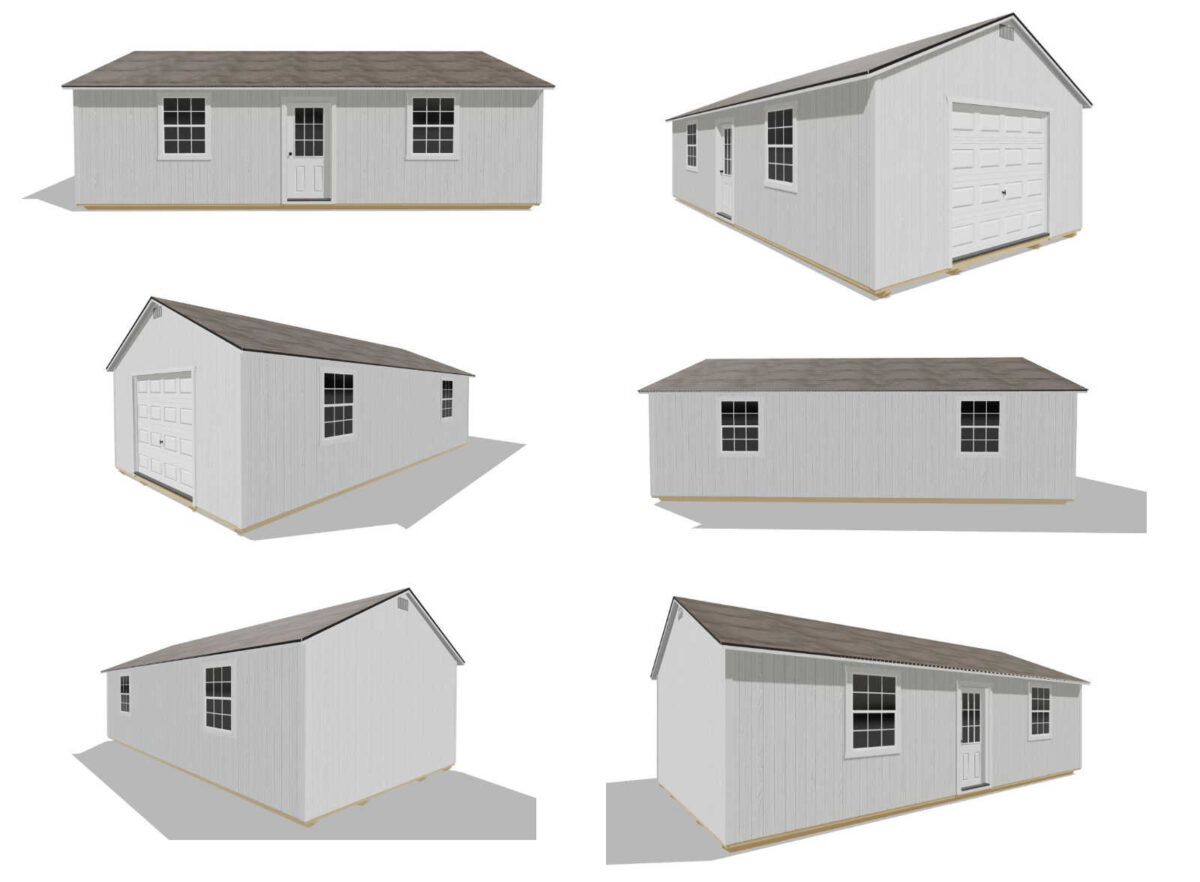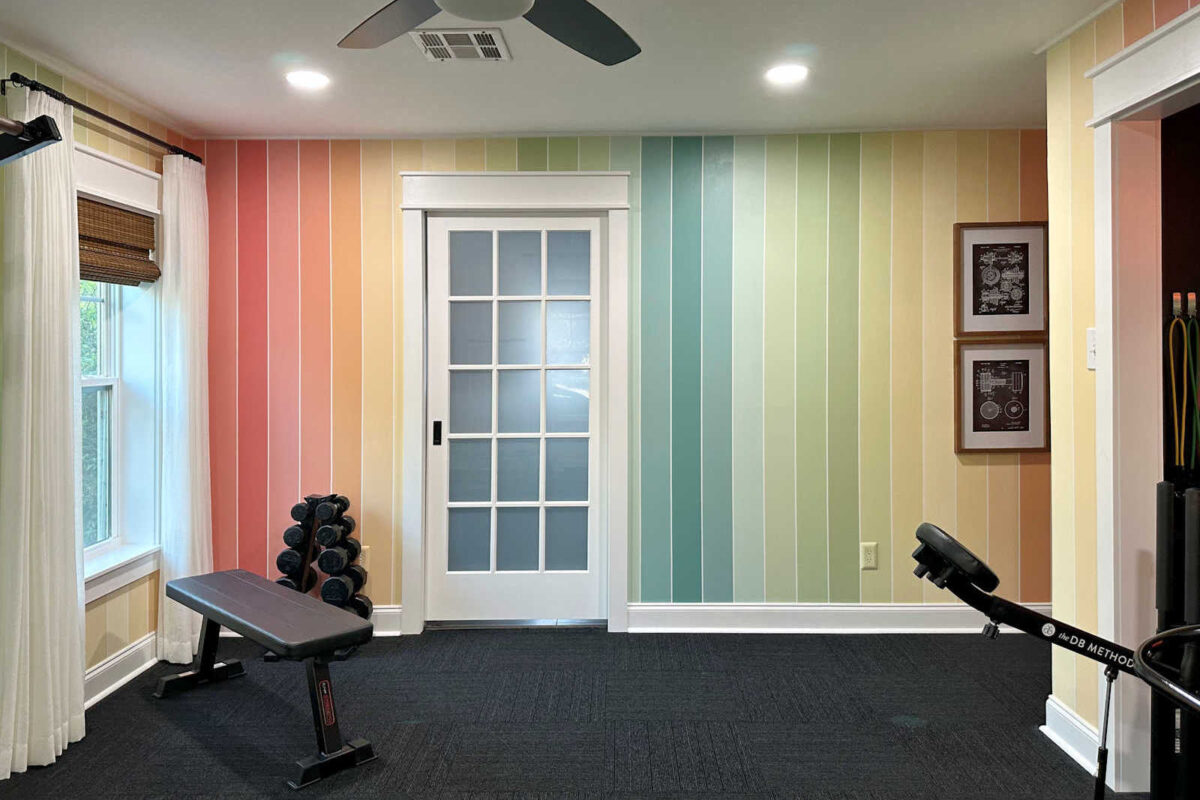
Last week, I submitted all of the information to get my building permit for my workshop that will be built behind our carport. The building was going to be 18′ x 32′, sitting 14 feet behind the carport. I had to submit a detailed description of the building, plus several drawings. I submitted much larger versions of these drawings that I’ve already shown y’all.
I also submitted this floor plan of the building…

I also had to submit a drawing showing our property with existing structures and where the new building was going to be located. So I submitted this…

I thought I had covered everything, but when I checked the status of my permit yesterday, it said it was on hold because I hadn’t submitted a foundation plan. There was also this note: “New foundation over 500 sf shall require engineer sealed design.” And my workshop was planned for 576 square feet. Ugh.
So there’s good news, and there’s bad news. The bad news is that there’s no way I’m spending money for an engineered foundation for a workshop that’s being built by a local shed company. So I’m having to reduce the size of my workshop to get it as close to 500 square feet without going over. My workshop will now be 18′ x 27′. I’ll lose five feet of width on the building, which is a real bummer, but I’m okay with it. The workshop will still be about 86 square feet bigger than both my studio and the carport, so it’s a very nice size. I’m okay with it, especially if I can avoid the expense and hassle of having to have an engineered foundation.
The good news is this. The one thing that was holding me back from feeling confident that I could actually act as my own contractor on the kitchen addition was the foundation. I kept hearing this term “engineered foundation” and I had no idea what it was. I spent time for several days trying to google and research and find information and answers, but I wasn’t finding anything helpful. I tried searching on my city’s permitting and inspection website, and couldn’t find any information. I couldn’t find any answers to my questions. What is an engineered foundation? Do I need an engineered foundation? If I need one, where do I go for that? I had so many questions, but could find no answers.
And then yesterday, on a completely different and unrelated project, the information I’ve been searching for just happens to land in my email inbox coming directly from a building plans examiner for my city! Ha! Perfect! So here’s what I learned…
What is an engineered foundation?
Simply stated, an engineered foundation is a foundation that is designed by an engineer. They take into account many factors, such foundation of the existing building (if there is one), the condition of the foundation of the existing building, the type of soil that the building/addition will be built on, etc.
This probably isn’t the case in every jurisdiction, but it’s my understanding that in my city, the city doesn’t have to inspect engineered foundations because the engineer is the one who signs off on the engineered foundation, and that’s filed with the city. But again, every county/city may have different requirements.
When is an engineered foundation needed?
In order to know whether or not you need an engineered foundation, you will have to check with your own local permitting and building inspection office. But to give you a general idea of when one might be required or not, I’ll share the requirements specific to Waco, Texas.
Existing pier and beam house:
If you’re building an addition onto a pier and beam house, and the addition will also be pier and beam, the addition foundation does not need to be engineered as long as the existing foundation has not failed.
Existing slab foundation:
This is the same as the existing pier and beam requirements. As long as the addition will have a slab foundation, and the existing slab has not failed, the addition will not require an engineered foundation.
An engineered foundation is required if the addition will have a different type of foundation from the existing structure. So if a house has a pier and beam foundation, but the addition will have a slab foundation, an engineered foundation is required. An engineered foundation is also required on an addition if the existing foundation has failed.
New foundations for new workshops, storage buildings, and residential additions over 500 square feet need to be engineered.
So those are the guidelines specific to Waco, Texas, as of the summer of 2024. And if you’re not in Waco, those guidelines can give you a general idea as to whether or not you need an engineered foundation for your addition or your accessory building. But of course, you’ll want to get the specific with your own permit and inspection office.
Now that I have this information, I really do feel like I could be my own contractor. I feel more empowered with this information, and I feel better equipped to make a decision. I’m still not sure if I’ll go with an engineered foundation or not for my kitchen addition, but at least now, I know what the city requires.
Addicted 2 Decorating is where I share my DIY and decorating journey as I remodel and decorate the 1948 fixer upper that my husband, Matt, and I bought in 2013. Matt has M.S. and is unable to do physical work, so I do the majority of the work on the house by myself. You can learn more about me here.







